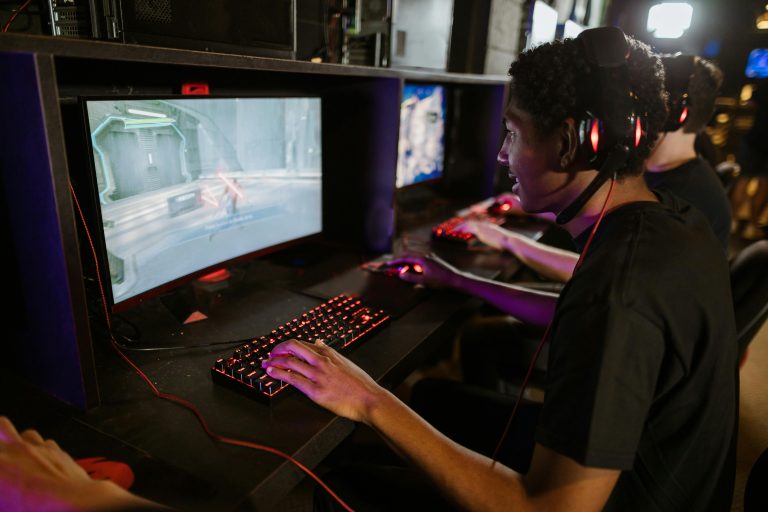
Have you ever dreamed of turning your passion for gaming into a thriving online hub and a potential source of income? The gaming industry continues to explode, and with it, the demand for authentic voices, expert reviews, and vibrant community discussions. Starting a gaming blog in 2025 is not just a hobby; it’s a strategic move to claim your space in a dynamic digital universe. Whether you’re a hardcore esports analyst, a retro gaming enthusiast, or a casual mobile gamer, there’s an audience waiting for your unique perspective. This ultimate guide is designed to cut through the noise and provide a clear, actionable roadmap. Forget the overwhelm. We’re breaking down the entire process into ten simple, manageable steps to launch a professional, profitable, and powerful gaming blog from the ground up. Let’s power up and get started.
Laying the Foundation: Niche, Name, and Home
Before you write a single post or design a logo, you must build a solid foundation. This initial planning phase is critical to your long-term success and will guide every decision you make.
Step 1: Carve Out Your Unique Niche
The days of generic “I play games” blogs are over. To stand out, you must specialize. A well-defined niche helps you attract a dedicated audience and establish authority. Ask yourself: What am I truly passionate about? What can I offer that others don’t? Consider niches like:
- Platform-Specific: Dedicated to PS6, Xbox Series Z, or Nintendo Switch 2 coverage.
- Genre-Focused: Deep dives into RPGs, FPS, indie horror, or simulation games.
- Community-Driven: Focusing on gaming news, culture, and esports drama.
- Retro & Preservation: Celebrating and analyzing classic games and consoles.
Choose a niche you love; your authenticity will resonate with readers.
Step 2: Secure Your Brand Identity
Your blog’s name is its first impression. It should be memorable, easy to spell, and relevant to your niche. Use domain registration sites to check availability. Once you have a name, secure the matching social media handles (Twitter, Instagram, TikTok) to ensure brand consistency across the web.
Step 3: Choose Your Tech Stack: Hosting & Platform
For a serious blog that you plan to monetize, avoid free platforms like Blogger. They limit your control and growth. Instead, opt for self-hosted WordPress.org. It’s the industry standard for a reason: unparalleled flexibility, thousands of themes, and powerful plugins. Pair it with a reliable hosting provider known for speed and security. This combination gives you full ownership and the ability to scale your blog effortlessly.
Building and Populating Your Gaming Universe
With your foundation set, it’s time to construct your blog’s visual identity and fill it with incredible content that keeps players coming back for more.
Step 4: Design for Experience, Not Just Looks
Your blog’s design must be clean, fast, and mobile-friendly. Choose a responsive WordPress theme designed for publishers or gaming sites. Prioritize readability with clear fonts, a dark mode option (a must for gamers), and intuitive navigation. Your goal is to make it effortless for visitors to find what they want and enjoy their time on your site.
Step 5: Craft a Content Strategy That Wins
Content is king. Plan a mix of content types to appeal to different readers and rank in search engines (SEO). Your strategy should include:
- Evergreen Guides: “How to Defeat Boss X in Game Y,” “Beginner’s Guide to Z.”
- News & Announcements: Quick, timely posts on industry happenings.
- In-Depth Reviews: Detailed, honest game reviews with scored breakdowns.
- Opinion Pieces & Lists: “Top 10 Upcoming Indie Games of 2025.”
Use keyword research tools to find what your target audience is searching for and base your topics around those terms.
Step 6: Master On-Page SEO
You can write the best article in the world, but no one will read it if search engines can’t find it. For every post, optimize your title tag, meta description, URL slug, and headers (H2, H3). Use your target keyword naturally throughout the content. Ensure images are compressed and have descriptive alt text. This technical work is what drives free, organic traffic to your site month after year.
Growing Your Audience and Revenue
Launching your blog is just the beginning. Now, you need to build a community around it and explore ways to generate revenue.
Step 7: Promote on Social Media and Beyond
Don’t just publish and hope. Actively promote your content. Share your posts on relevant subreddits, gaming forums, and Discord servers (where allowed). Create short, engaging video clips from your articles for TikTok, YouTube Shorts, and Instagram Reels. Engage with other bloggers and influencers in your niche. Building relationships is key to growth.
Step 8: Build an Email List from Day One
Your social media followers are rented; your email list is owned. Offer an incentive like a free game guide, cheat sheet, or exclusive content to encourage sign-ups. Use this list to notify your most loyal fans about new content, which drives consistent traffic and builds a dedicated community.
Step 9: Explore Monetization Avenues
While passion comes first, profit allows you to invest more time into your blog. Once you have steady traffic, explore monetization:
- Display Advertising: Networks like Google AdSense or Ezoic place relevant ads on your site.
- Affiliate Marketing: Earn commissions by linking to games on Steam, hardware on Amazon, or gaming chairs on specialty sites.
- Sponsored Content: Get paid by brands or game developers to write honest reviews or articles.
- Exclusive Content: Offer premium content or a ad-free experience through a membership program.
Step 10: Analyze, Adapt, and Evolve
Use free tools like Google Analytics and Google Search Console to track your performance. See which posts are popular, where your traffic comes from, and how users behave on your site. Use these insights to adapt your content strategy, double down on what works, and continually improve your blog. The gaming world changes fast, and your blog should too.
Game On
Launching a profitable gaming blog in 2025 is an exciting journey that blends passion with strategy. It requires patience, consistency, and a genuine love for the community you’re serving. There is no cheat code for overnight success, but by following these ten steps—from finding your niche and mastering SEO to building a community and monetizing—you are setting yourself up for victory. The digital arena is waiting



